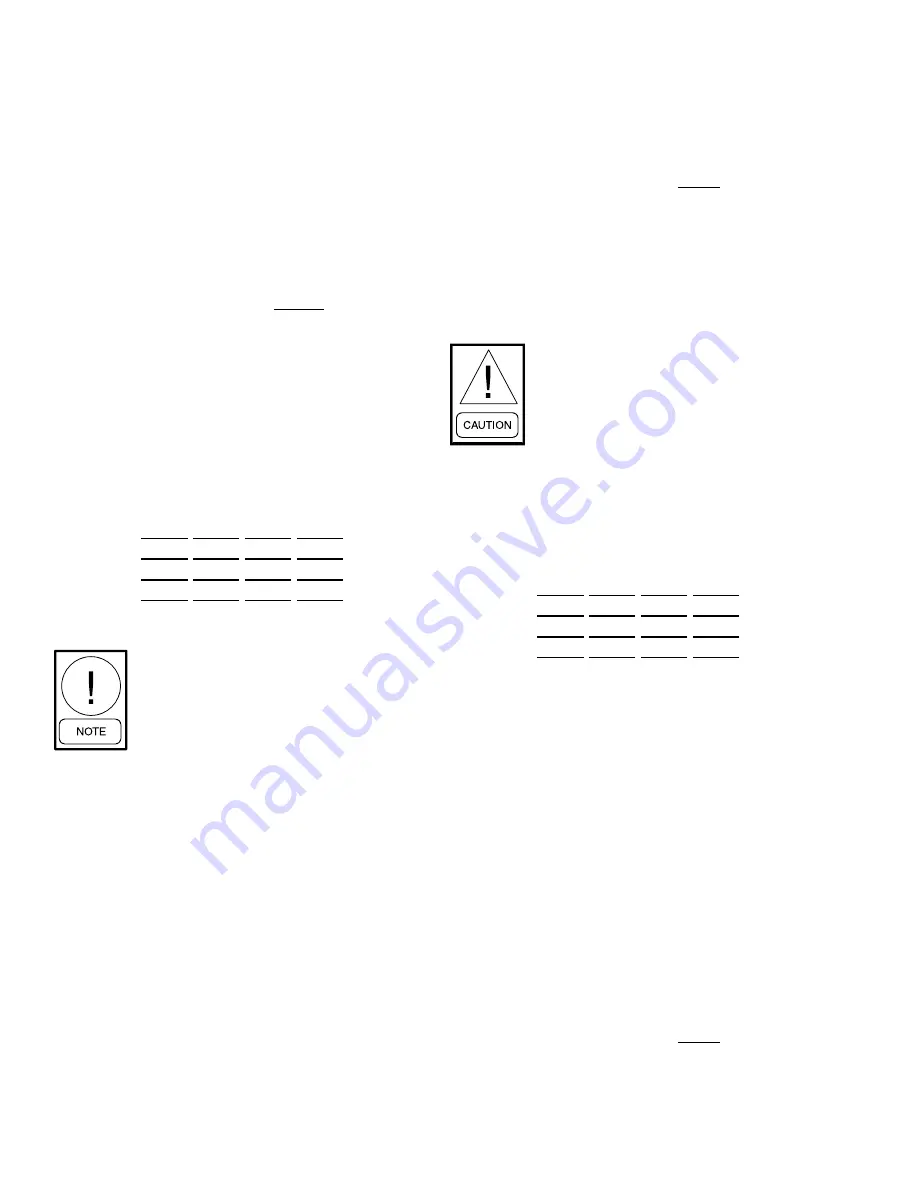
FORM 201.19-CL2 (309)
8
JOHNSON CONTROLS
The subcooling temperature of each system should be
calculated by recording the temperature of the liquid
line at the outlet of the condenser and subtracting it
from the recorded liquid line pressure at the liquid stop
valve, converted to temperature from the temperature/
pressure chart.
Example:
Liquid line pressure =
202 PSIG converted to
102°F (39°C)
minus liquid line temp. - 87°F (31°C)
SUBCOOLING =
15°F (8.3°C)
The subcooling should be adjusted to 12-15°F (6.7 - 8.3°C).
1. Record the liquid line pressure and its corre-
sponding temperature, liquid line temperature
and subcooling below:
SYS 1
SYS 2
SYS 3
SYS 4
Liq Line Press =
PSIG (kPa)
Temp =
°F
(°C)
Liq Line Temp =
°F
(°C)
Subcooling =
°F
(°C)
If equipped with an economizer, the
economizer will provide approximate-
ly an additional 20ºF (11.1ºC) subcool-
ing at the expansion valve in ambients
above 90ºF (32ºC). Below 90ºF (32ºC),
the economizer will not provide addi-
tional subcooling.
After the subcooling is set, the suction superheat should
be checked. The superheat should be checked only after
steady state operation of the chiller has been established,
the leaving water temperature has been pulled down to
the required leaving water temperature, and the unit is
running in a fully loaded condition. Correct superheat
setting for a system is 10 - 12°F (6 - 7°C).
The superheat is calculated as the difference between the
actual temperature of the returned refrigerant gas in the
suction line entering the compressor and the tempera-
ture corresponding to the suction pressure as shown in
a standard pressure/temperature chart.
Example:
Suction Temp =
46°F (8°C)
minus Suction Press
60 PSIG converted
to Temp - 34°F (1°C)
12°F (7°C)
The suction temperature should be taken 6" (13 mm)
before the compressor suction service valve, and the
suction pressure is taken at the compressor suction
service valve.
The EEV is non-adjustable. Superheat
setpoint is programmable from the
keypad.
2. Record the suction temperature, suction pressure,
suction pressure converted to temperature, and
superheat of each system below:
SYS 1
SYS 2
SYS 3
SYS 4
Suction Temp =
PSIG (kPa)
Suction Press =
°F
(°C)
Temp =
°F
(°C)
Superheat =
°F
(°C)
CHECkIng ECOnOmIZER SUPERHEAt
(IF APPLICABLE) (15 tOn tXV)
The economizer superheat should be checked to assure
proper economizer operation and motor cooling. Correct
superheat setting is approx. 10 - 12°F (6 - 7°C).
The superheat is calculated as the difference between
the pressure at the Economizer Service Valve on the
compressor converted to the corresponding temperature
in a standard pressure/temperature chart and tempera-
ture of the gas at the bulb on the entering piping to the
motor housing.
Example:
Economizer Gas Temp =
90°F (32°C)
minus Economizer Press
139 PSIG converted
to Temp - 78°F (26°C)
12°F (6°C)



























